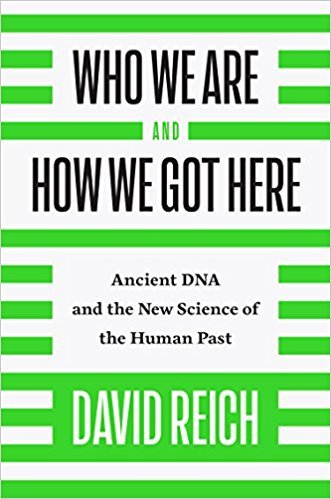Who We Are and How We Got Here by David Reich
I was inspired to read this book after watching a podcast with David Reich. As someone who’s long been interested in the origins of humanity, the movement of people and languages, and the ancient DNA revolution, I was excited to understand it all in greater detail straight from the horse’s mouth.
This book is a fascinating introduction to the world of ancient DNA and how it has fundamentally reshaped not just genetics but also other scientific fields, from archaeology and biology to medicine and economics. It challenges long-held beliefs and breaks stereotypes about human evolution.
David Reich offers a sweeping walkthrough of ancient DNA research (as of 2018), showing how studying entire genomes, not just chromosomes, has helped trace the journey of our species from its roots in Africa to its spread across Europe and beyond.
There’s a wealth of information in this book (which I won’t fully dive into here) about the DNA sequencing process, from sample collection and four-population tests to identifying ghost populations. He explains how sequence lengths, mutation rates, and genome density help reveal deep ancestral patterns across human populations.
One of the book’s central themes is that there are no “pure” human lineages. Humans, Neanderthals, and Denisovans have repeatedly intermixed over tens of thousands of years. Reich also addresses how misinterpretations of genetics, like those seen in Nazi Germany, have had harmful political consequences and how today’s researchers must carefully navigate these challenges while pursuing the truth.
The chapters I found most compelling were the ones on the making of modern Europe and, naturally, the one on India — two stories that are deeply intertwined and have sparked debate for decades. Reich traces the narrative from the Rig Veda to the tribes of North Sentinel Island. His collaboration with the Indian government to collect a vast array of DNA samples was fascinating to read.
He also explains how he had to carefully frame his findings about a major West Eurasian migration into India, given the politically sensitive nature of the Aryan Invasion Theory (AIT). This led him to introduce the terms Ancestral North Indians (ANI) and Ancestral South Indians (ASI), two genetically distinct populations that fully mixed over time to form the ancestry of modern Indians (excluding groups like those on North Sentinel Island). The ANI are genetically linked to Europeans, while the ASI descended from a group not related to any population outside India. Their eventual mixing, which occurred between 4,000 and 2,000 years ago, was followed by the rise of caste-based endogamy, isolating population groups for centuries, a phenomenon known as a “population bottleneck.”
India, despite having over a billion people, isn’t one large genetic population like the Han Chinese. Instead, thanks to jati endogamy, it is a mosaic of many small, distinct groups.
Reich extends his exploration to other continents, shedding light on their unique ancestral histories and revealing the untapped potential of ancient DNA as more global data becomes available. His ability to make such a complex, nuanced subject accessible is a testament to both his clear writing and deep dedication.
By the end of the book, it’s hard not to feel a sense of awe and curiosity about how many more myths and revelations are still waiting to be uncovered. The story of humanity, it seems, is far from over.

Also published here.